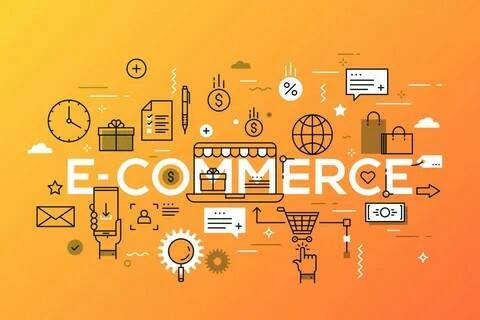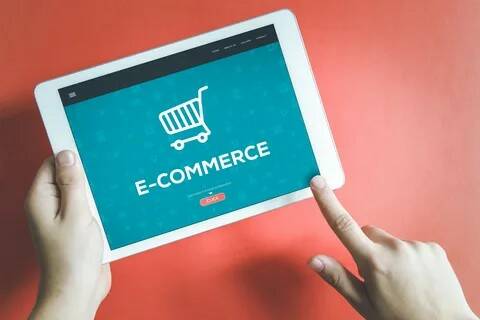
Ecommerce, short for electronic commerce, refers to the buying and selling of goods and services over the internet. It has transformed the way businesses operate and how consumers shop. Here are some key aspects of ecommerce:
- Online Stores: Ecommerce allows businesses to establish online stores where customers can browse and purchase products or services. These stores can be standalone websites or hosted on third-party platforms.
- Digital Payments: Ecommerce relies on digital payment methods to facilitate transactions. This includes credit cards, debit cards, mobile payment apps, digital wallets, and even cryptocurrencies. Secure payment gateways ensure that customer information is protected during transactions.
- Inventory Management: Ecommerce platforms enable businesses to manage their inventory effectively. They can track stock levels, update product availability in real-time, and automate reordering processes to ensure smooth order fulfillment.
- Product Catalogs: Online stores provide detailed product catalogs that include descriptions, images, specifications, and pricing information. Customers can easily search and filter products to find what they’re looking for.
- Shopping Carts: Ecommerce platforms feature shopping carts that allow customers to add items they wish to purchase. They can review their selections, modify quantities, and proceed to checkout when ready.
- Order Processing and Fulfillment: Ecommerce platforms automate order processing, generating order notifications for businesses and tracking information for customers. From order confirmation to shipping and delivery updates, the entire process can be managed electronically.
- Customer Reviews and Ratings: Ecommerce platforms often include customer review and rating systems. This allows shoppers to make informed purchasing decisions based on the experiences and feedback of other customers.
- Customer Support: Online stores provide various customer support channels, including live chat, email, and phone support. Businesses can address customer inquiries, provide assistance, and handle returns or refunds.
- Analytics and Insights: Ecommerce platforms offer analytics tools to track sales, customer behavior, and website performance. These insights help businesses make data-driven decisions, optimize their marketing strategies, and improve the overall customer experience.
- Cross-border Commerce: Ecommerce enables businesses to reach customers worldwide, expanding their market reach beyond physical store locations. International shipping and localization options allow businesses to cater to customers in different countries and regions.
- Digital Marketing: Ecommerce relies heavily on digital marketing strategies to drive traffic and conversions. This includes search engine optimization (SEO), social media marketing, email marketing, content marketing, and online advertising.
Ecommerce has revolutionized the retail landscape, providing convenience, accessibility, and global reach for businesses and consumers alike. Its continuous evolution and integration with emerging technologies promise exciting possibilities for the future of commerce.
Contents
The History
Ecommerce, short for electronic commerce, refers to the buying and selling of goods and services over the internet. It has a rich history that spans several decades. Let’s take a closer look at the history of ecommerce:
- Early Innovations (1960s-1970s): The concept of ecommerce began to take shape in the 1960s when businesses started using Electronic Data Interchange (EDI) to exchange documents electronically. EDI enabled companies to transfer orders, invoices, and other business transactions using standardized formats. This laid the foundation for electronic commerce.
- Emergence of Online Shopping (1980s-1990s): The 1980s saw the rise of teleshopping and telebanking, where consumers could place orders or perform banking transactions over the phone. In 1991, the internet was made available for commercial use, and the first web browser was introduced in 1993. This led to the development of early online shopping platforms like Amazon, which launched in 1995, and eBay, which started as an online auction site in 1995.
- Growth of Online Retailers (2000s): The early 2000s witnessed a rapid expansion of online retailing. Companies like Amazon, eBay, and Alibaba gained prominence and established themselves as major players in the ecommerce industry. Online retailers focused on improving user experience, expanding product offerings, and developing secure online payment systems.
- Mobile Commerce (2010s): With the proliferation of smartphones and mobile internet, mobile commerce (m-commerce) experienced significant growth. Consumers started using their mobile devices to browse and make purchases from online retailers. Mobile apps and responsive websites were developed to provide a seamless shopping experience on smaller screens.
- Marketplaces and Social Commerce: In recent years, online marketplaces like Etsy and Shopify have gained popularity, enabling individuals to sell their products online. Social media platforms, such as Instagram and Facebook, have also integrated shopping features, allowing businesses to showcase and sell products directly to users.
- Innovations and Technologies: Ecommerce has seen various technological advancements that have shaped the industry. These include secure online payment systems, advanced logistics and delivery services, personalized product recommendations, augmented reality (AR) and virtual reality (VR) shopping experiences, and artificial intelligence (AI)-powered chatbots for customer service.
- Global Expansion: Ecommerce has transcended geographical boundaries, allowing businesses to reach customers worldwide. Cross-border ecommerce has facilitated international trade and opened up new markets for businesses of all sizes.
The history of ecommerce showcases its evolution from basic electronic transactions to a thriving industry that has transformed the way people shop and conduct business. With continuous technological advancements, the future of ecommerce is expected to bring even more innovation and convenience to consumers and businesses alike.

Future of Online Shopping
The future of online shopping, also known as ecommerce, is full of exciting possibilities and advancements. Here are some key trends that may shape the future of online shopping:
- Mobile Shopping Dominance: Mobile https://www.buydo.eu commerce, or m-commerce, is expected to continue its growth and become the dominant platform for online shopping. With the increasing adoption of smartphones and tablets, retailers will invest in optimizing their websites and apps for mobile devices to provide seamless shopping experiences.
- Personalization and AI: Artificial intelligence (AI) will play a crucial role in enhancing the personalized shopping experience. Retailers will leverage AI algorithms to analyze consumer behavior, preferences, and purchase history to offer tailored product recommendations, personalized offers, and customized shopping experiences.
- Augmented Reality (AR) and Virtual Reality (VR): AR and VR technologies will revolutionize the online shopping experience. Consumers will be able to virtually try on clothing and accessories, visualize how furniture fits in their homes, or even test cosmetic products before making a purchase. These immersive technologies will bridge the gap between the physical and digital shopping experience.
- Voice Commerce: Voice-enabled shopping through devices like smart speakers will become more prevalent. Users will be able to search for products, place orders, and track deliveries using voice commands. Retailers will optimize their platforms to be voice-assistant friendly and offer seamless voice-commerce experiences.
- Omnichannel Integration: The distinction between online and offline shopping will blur further as retailers adopt omnichannel strategies. Physical stores will seamlessly integrate with online platforms, providing options like click-and-collect, in-store pickups, and same-day deliveries. Consumers will have the flexibility to choose how they want to interact with retailers across various touchpoints.
- Sustainability and Ethical Shopping: Consumers’ growing awareness of environmental and social issues will drive a demand for sustainable and ethically sourced products. Retailers will need to prioritize eco-friendly practices, reduce packaging waste, and offer transparency in their supply chains. Online platforms may also feature dedicated sections for sustainable products.
- Enhanced Payment Security: With the increase in online transactions, ensuring robust payment security will remain a top priority. Technologies such as tokenization, biometric authentication, and blockchain-based payment systems will enhance the security and privacy of online transactions, building trust among consumers.
- Social Commerce and Influencer Marketing: Social media platforms will continue to evolve as shopping destinations. Retailers will leverage social commerce features, such as in-app shopping, live streaming, and shoppable posts, to directly engage with customers and drive sales. Influencer marketing will play a significant role in product discovery and brand promotion.
As technology advances and consumer preferences evolve, the future of online shopping will be characterized by seamless, personalized, and immersive experiences that cater to the needs and preferences of individual consumers. Retailers will need to adapt to these trends to stay competitive and provide exceptional online shopping experiences.